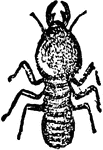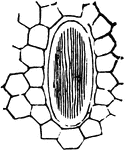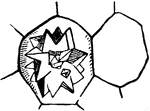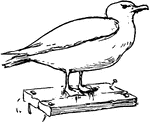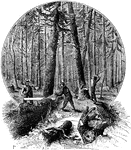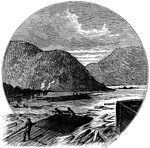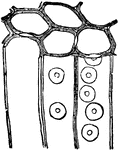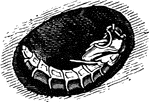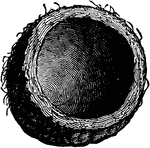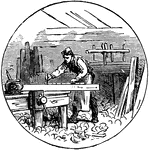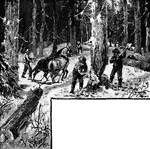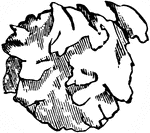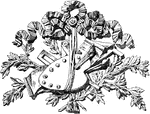
Morses Telegraph
"The machine itself is sufficiently simple, and will be comprehended at once, by those who have made…
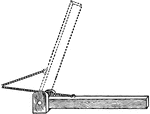
Oblique Pull
"It is worthy of note that, owing to the oblique direction in which the muscles are commonly inserted…

Lute
"The European lute is derived in form and name from the Arabic "el ud," "the wood," the consonant of…
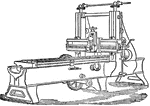
Planning Machine
"The ordinary self-acting planing machine. Its action bears no resemblance to the familiar process of…
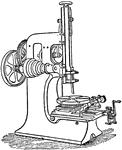
Slotting Machine
"The slotting machine also cuts grooves and slots, but in an entirely different manner. Those who are…
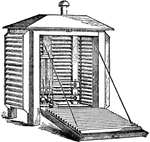
Thermometer Box
"Stevenson's louvre-boarded box for the thermometers, which is now very widely used for temperature…

Heliometer
"No part of the equatorial mounting is shown in the figure, as it resembles every respect that usual…

Microscope
"For a laboratory microscope, the pattern represented here has been found very convienient, —the…
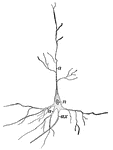
Nerve Cell
Nerve cell from the brain; a, processes by which it communicates with other cells near by;…
Stamen of Globe Amaranth
Very short filament bearing a single anther-cell; it is open from top to bottom, showing the pollen…

Stamens
Stamens of the mint family. Of a Monarda: the two anther-cells with bases divergent so that they are…
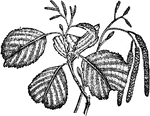
Alder
A tree whose wood is soft and red. It is a wetland tree that grows throughout the Americas, Europe and…
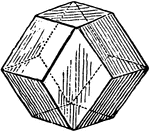
Vegetable Cell
Diagram of a vegetable cell, such as it would be if when spherical it were equally pressed by similar…
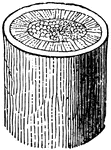
Stem of Flax
Short piece of stem of Flax, magnified, showing the bark, wood, and pith in a cross section.

Bit of Young Maple Wood
Magnified view of surface of a bit of young Maple wood from which the bark has been torn away, showing…
Conferva
The growing end of a branching Conferva (Cladophora glomerata), showing how, by a kind of budding growth,…

Moth Lantern
From the well known nocturnal habits of moths, and the certainty of their being destroyed by a light,…
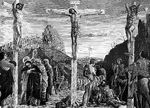
The Crucifixion
This painting is by Andrea Mantegna is a good example of the oil paint on wood technique that he used.…
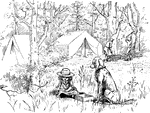
Camping
A little girl collecting berries while her dog watches, and her parents chop wood in the background.

Offering of Isaac
"And they came to the place which God had told him of. And Abraham built the altar there, and laid the…
Buttonwood
Some wood-cells from Buttonwood, Platanus, a whole cell and lower end of another on the left; a cell…
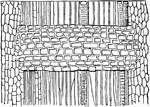
Maple
Surface of a young Maple wood from which the bark has been torn away, showing the bark (on the left)…
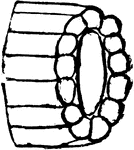
Chara
Outlines of a portion of the stem in section, showing the central cell and the outer or cortical cells.
Desmid
Closterium acutum, a common Desmid. It is a single firm-walled cell, filled with green protoplasmic…

Vaucheria
A Vaucheria; single cell grown on into a much-branched thread; the end of some branches enlarging, and…
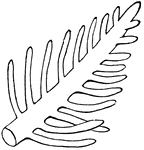
Bryopsis Plumosa
Bryopsis plumosa; apex of a stem with its branchlets; all the extension of one cell.
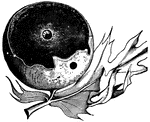
Cynips Spongifica
Gall made by the larva of Cynips q. spongifica. a, larve in its cell; b, point of exit of adult.
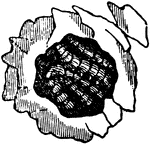
Potter Wasp
Fraternal potter-wasp, Eumenes fraterna, wasp's cell broken up to show the caterpillars stored in it.
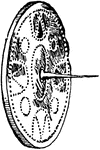
Highland targe
"The targe of the Scottish Highlands, composed of wood and leather, and studded with brass decoratively…

Diagram of a Neuron
Diagram of a neuron. Labels: A, axon arising from the cell-body and branching at its termination; D,…

Spinal Nerve Roots
Diagram showing relation of neurons composing the spinal nerve roots with adjacent nervous structures.…

Nerve Reflex Arc
Reflex arc, as it is approximately in man. Labels: 1, nerve terminal, or sensory epithelium; 2, dendrite…

Nervous System Diagram
Diagram of nervous system. Labels: a, a, cortex of cerebral hemispheres; b, b, cell body and dendrites…

Capillary Network
Isolated capillary network formed by the junction of several hallowed-out cells, and containing colored…


